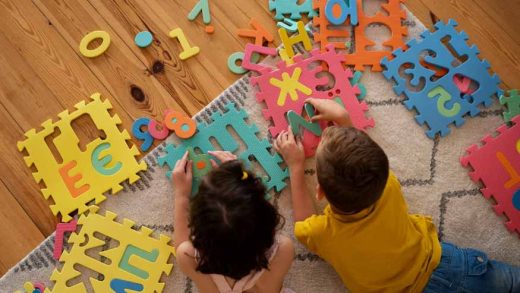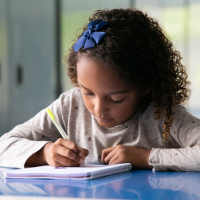Your child develops a set of skills known as pre-reading skills before they learn to read. These reading skills are signs of early literacy. It might look as though your children are merely playing. But, they organise what they know about books and language including words, letters, and sounds. They also learn how they work together to form this magical skill known as “reading.” It’s fun to work on pre-reading skills with your child through simple, imaginative games and activities.
What are Pre-Reading Skills for Kids?
Pre-reading skills are the skills that help children become readers. Many of these are essential skills in preschoolers and they use them in their lifetime. Decoding and reading words will help kids in school and their careers. Parents need to provide opportunities for children to practise pre-reading in their early years.
- Oral Language
- Letter Knowledge
- Phonological Awareness
- Beginning Writing
- Print Awareness
Oral Language includes the ability to understand spoken language and speak to communicate. Developing your child’s oral language skills increases his or her vocabulary and speaking skills. It contributes to comprehension and enjoyment of reading. They build listening and attention skills for school.
Letter knowledge includes recognition and naming of letter names and letter sounds. They also develop a general understanding of how print and pictures are processed. They need to learn how to look at letters and listen to letter sounds differently and carefully.
Phonological awareness is a listening skill necessary for children to learn to read. Identifying and playing with these word parts is essential for future success with phonics. It starts around the age of 3 or 4. Then your child begins to show increasing skill at playing with words by changing sounds or syllables.
Beginning writing includes fine motor skills and eye-hand coordination for controlling writing tools. Children understand that they can show their thoughts through drawing and writing. They can write letters that represent sounds in words.
Print awareness is the understanding that letters form words and these words have meaning when they are read. It is knowing that the four letters on a stop sign have a message. While the words in a book tell a story or provide information. There is also an understanding of the order of reading as they watch people read from left to right and cover to cover.
What are Pre-Reading Activities for Kids?
Many children will learn some pre-reading skills independently. But, most benefit from direct instructions. There are everyday activities kids should already be doing at home. Here are eight simple pre-reading activities for preschoolers that are fun for home or school.
- Recreate a Picture Book
- Read to Your Kid
- Create Stories About Pictures
- Create a Book of Environmental Print
- Let Kids Play Sequencing
- Label Common Items at Home
- Let the Child Play Word Games
- Flash Cards
Get a copy of your kid’s favourite picture book, separate all the pages and reshuffle it. Then, instruct your kid to remake the story from his memory by arranging the pages in the correct order. If you find your child getting excited to do more, you may cut the text from the pictures. Then find out if he can match the text with the illustrations.
The best way to introduce your kids to cadence, words, sequencing, and fluency is to read to them every day. When reading books, pick up an old favourite of yours or choose a book your child would like. Then, read to them at bedtime and also any other time you have together. Make this a habit, and it’ll soon be a custom in your family.
Ask your kid to tell you stories about random pictures available around, like family pictures or pictures from magazines. Encourage your kid to tell who the characters are and what they are doing. Let him know that there is no right answer and only tell a story out of her imagination. Then, to encourage him more, you can tell a story of your own.
Environmental print refers to the words, signs, symbols, and logos that kids see every time. Encourage your kid to create his book on environmental print. Give him resource materials like magazines, newspapers, glue, safety scissors, and a sheaf of blank paper. Let your kid cut out familiar symbols and logos and paste them all into his book.
You may need sequencing cards which you can buy in stores. Each card has a picture that your child needs to place in the correct order. Once your kid is done sequencing the cards, ask him to tell the story. Your child will learn that stories have a beginning, middle, and end.
For this pre-reading activity, you may use pieces of poster board to print the names of the items available in your home. Create two sets; one set is used to put a name for each item and the other for your kid to play with. Don’t pressure your kid to match the two sets.
Word Games let your kid experiment with letters, words, and sounds, which are all essential to learning how to read. You can play games with your preschoolers like I Spy, Word Families, and Rhymes.
Flashcards are an effective method of teaching your kid to recognise and name letters. It’s a simple way of teaching the sound-symbol connection. It is essential for early reading. In selecting the material, you have to be careful to match the difficulty level with your kid’s ability level.
Introducing the above-mentioned activities will help develop reading skills for kids. There are many phonological awareness games and other print motivation activities out there. You can involve kids in selecting the materials and making up the game rules. And if they like it, they’ll keep doing it.
If you are in search of a good preschool for your kid, you may consider Kangaroo Kids International Preschool, known for providing the best guidance to its students. To learn more about our curriculum, contact us today!









